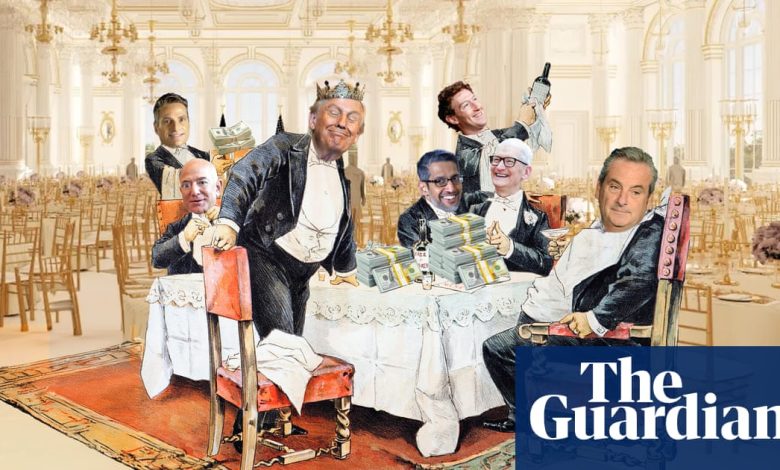The Luxury Gap: Trump Constructs His Palace While Americans Struggle with Hunger

Opulence Amidst Struggle: Trump’s Controversial White House Dinner
On October 15, Donald Trump hosted nearly 130 affluent donors and corporate representatives for a lavish dinner at the White House, which many are criticizing as a glaring display of wealth amidst a government shutdown impacting millions.
The Extravagance of the White House Dinner
The dinner featured opulent gold-rimmed plates and sumptuous dishes like heirloom tomato panzanella salad, beef Wellington, and dessert of roasted Anjou pears with cinnamon crumble. It was intended to reward those contributing to a new ballroom project expected to cost around $300 million, demonstrating the disconnect between elite excess and the struggles of average Americans during a federal government shutdown.
Government Shutdown and Public Reaction
As the government shutdown continues, it threatens food assistance for tens of millions of low-income Americans. Critics, including Democrats, accuse Trump’s Republican Party of “weaponizing hunger” to push a radical agenda, underlining the stark contrast between the lavish White House event and the hardships faced by many citizens.
Historical Context and Symbology
The extravagant feast invites comparisons to historical figures like Louis XVI and Marie Antoinette, underscoring a growing divide in America. The image of a billionaire president feasting while families struggle presents a troubling snapshot of contemporary society.
Political Strategy and Public Opinion
Trump has consistently positioned himself as a “blue-collar billionaire,” achieving electoral success among non-college-educated voters. Yet, many Americans express discontent with the ongoing government shutdown and the proposed ballroom project, with recent polls indicating that 56% oppose it. This reveals potential vulnerabilities for Trump’s political strategy as dissatisfaction grows.
Impact on Public Services and Civic Engagement
The looming implications of the shutdown threaten essential services like the Supplemental Nutrition Assistance Program (SNAP), impacting 42 million people. As hunger and hardship become more pronounced, Democrats have an opportunity to engage with communities, particularly in rural areas that rely heavily on government support.
The Broader Picture of Inequality
Ethics watchdogs criticize the dinner as a blatant example of access and influence-peddling. Public sentiment suggests that policies benefiting the wealthy may lead to widening social and economic inequality, particularly as tax cuts for the rich coincide with cutbacks in essential programs for working families.




